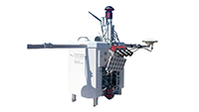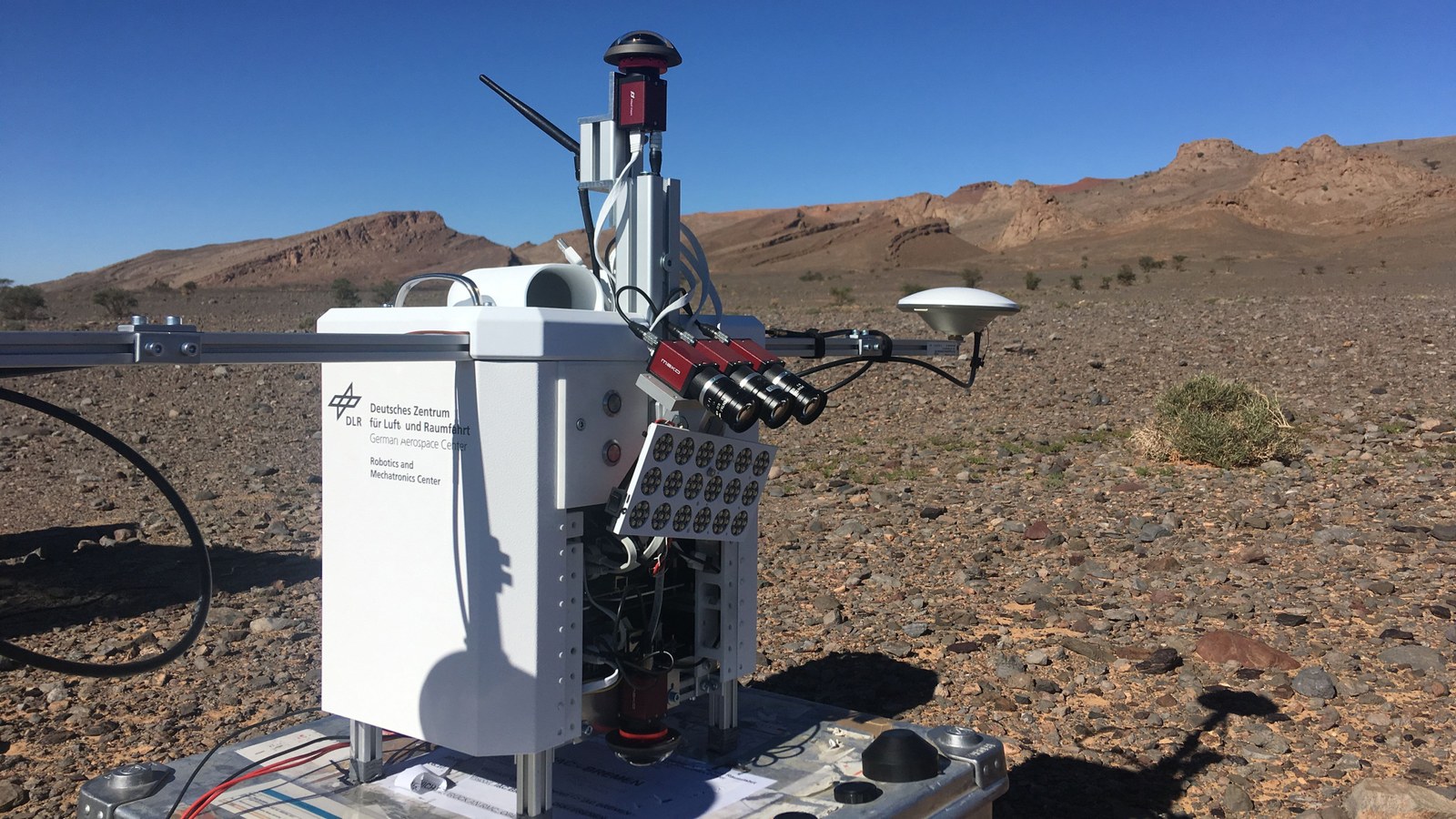SUPER

SUPER is a compact collection of the sensor components of our LRU rover. The system enables the recording of sensor data for navigation and positioning with minimal logistic effort and under low personnel input. The primary goal is the use in field tests in regions similar to other celestial bodies like the moon or Mars. In addition, SUPER is a test platform for new sensor components, as the sensors can be integrated very easily.
SUPER was used for the first time in 2018 in the Morocco-Mars Analog field test in the Sahara.
Technical data:
Weight: | 14kg |
Size: | 34x26x40cm |
Battery capacity: | 2 x 208 Wh with hot-swap-capabilities |
Sensors: | monochrome stereo pair with 90mm baseline, color camera, two omnidirectional cameras with a 360°x280° FoV, IMU |
System description:
SUPER allows a wide range of applications, as it can either be carried by a human or integrated with other robots. It has three cameras which are mounted on its front. This is a monochrome stereo pair with 90mm distance and a colour camera mounted in between. The stereo cameras are the main component for the optical navigation.
The system also has an XSENS MTi-10 IMU, which measures linear acceleration and angular velocity.
Two Kontron mITX-KBL boards with Core i7-7820EQ CPUs were installed and a Spartan FPGA for depth image calculation was integrated.
The software components for navigation are analogue to the LRU rovers, but SUPER has no active components such as a swiveling camera mast. Instead, the cameras are mounted at a fixed angle.
SUPER was used in the H2020 Peraspera Operational Grants 3 (InFuse) and 6 (Facilitators) to test sensor fusion algorithms in planetary analogue settings, amongst others the Moroccan desert. In these projects it was referred to as Handheld Central Rover Unit (HCRU).


